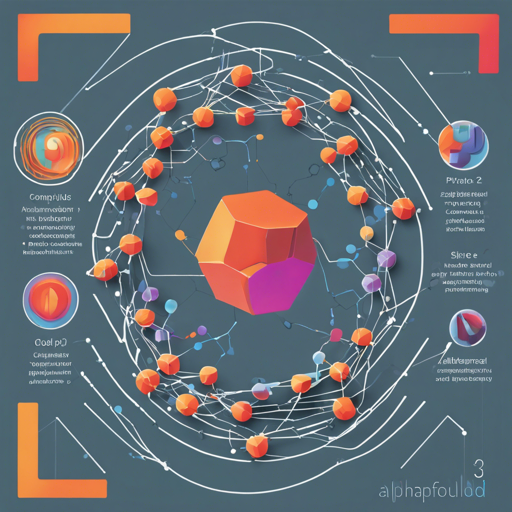In the pursuit of understanding biomolecular interactions with unprecedented accuracy, AlphaFold3 has emerged as a groundbreaking solution. This blog walks you through the implementation process of AlphaFold3 using PyTorch. Whether you are a novice or a seasoned pro, this guide will make the process user-friendly and insightful.
Installation
Before diving into the code, you need to install AlphaFold3. It’s as easy as pie!
pip install alphafold3Input Tensor Size Example
Let’s walk through setting up your input tensors using PyTorch. Think of input tensors as the ingredients you prepare before cooking a delicious meal; they set the base for everything that follows.
import torch
# Define the batch size, number of nodes, and number of features
batch_size = 1
num_nodes = 5
num_features = 64
# Generate random pair representations
pair_representations = torch.randn(batch_size, num_nodes, num_nodes, num_features)
# Generate random single representations
single_representations = torch.randn(batch_size, num_nodes, num_features)Understanding the Code
In the above code:
- The variable batch_size is akin to the number of servings – it defines how many instances you are preparing.
- num_nodes denotes the different entities in your data (like ingredients), and num_features represents the characteristics of these entities (the flavors of each ingredient).
- torch.randn generates random tensors, much like tossing random ingredients in a bowl – you’re creating a mix to feed into AlphaFold3.
Genetic Diffusion
Next, we delve into the Genetic Diffusion process, which operates on atomic coordinates.
from alphafold3.diffusion import GeneticDiffusion
# Create an instance of the GeneticDiffusionModule
model = GeneticDiffusion(channels=3, training=True)
# Generate random input and ground truth coordinates
input_coords = torch.randn(10, 100, 100, 3)
ground_truth = torch.randn(10, 100, 100, 3)
# Pass coordinates through the model
output_coords, loss = model(input_coords, ground_truth)
# Print output coordinates and loss
print(output_coords)
print(loss)Explaining Genetic Diffusion
In this segment:
- We create a model GeneticDiffusion that acts like a cooking process, where channels represent different cooking methods and training means our model is in learning mode.
- We generate input_coords (ingredients) that are passed through the diffusion model, resulting in output_coords (the final dish) and loss (scraps we can learn from).
Full Model Example Forward Pass
Here’s how to execute a complete forward pass:
from alphafold3 import AlphaFold3
# Creating random tensors
x = torch.randn(1, 5, 5, 64) # Input
y = torch.randn(1, 5, 64) # Additional input
# Initialize AlphaFold3 model
model = AlphaFold3(dim=64, seq_len=5, heads=8, dim_head=64,
attn_dropout=0.0, ff_dropout=0.0,
global_column_attn=False, pair_former_depth=48,
num_diffusion_steps=1000, diffusion_depth=30)
# Forward pass through the model
output = model(x, y)
# Print the output tensor shape
print(output.shape)Troubleshooting Tips
While implementing AlphaFold3, you might encounter some bumps along the road. Here are a few troubleshooting suggestions:
- Ensure you have the latest version of PyTorch installed. Compatibility can be an issue.
- Double-check your input tensor sizes; mismatched sizes can lead to errors.
- If you’re using a GPU, ensure you’re running it with appropriate flags in Docker.
- Keep track of memory allocation issues especially when dealing with large models.
For more insights, updates, or to collaborate on AI development projects, stay connected with fxis.ai.
Building and Running with Docker
If you prefer containerization to manage dependencies, Docker is your friend!
# Build the image
docker build -t af3 .
# Run the image with GPUs
docker run --gpus all -it af3Conclusion
By following this guide, you can successfully implement AlphaFold3 and explore the world of biomolecular interactions with ease. Whether you’re working on research, development, or just curious, the possibilities are endless!
At fxis.ai, we believe that such advancements are crucial for the future of AI, as they enable more comprehensive and effective solutions. Our team is continually exploring new methodologies to push the envelope in artificial intelligence, ensuring that our clients benefit from the latest technological innovations.

